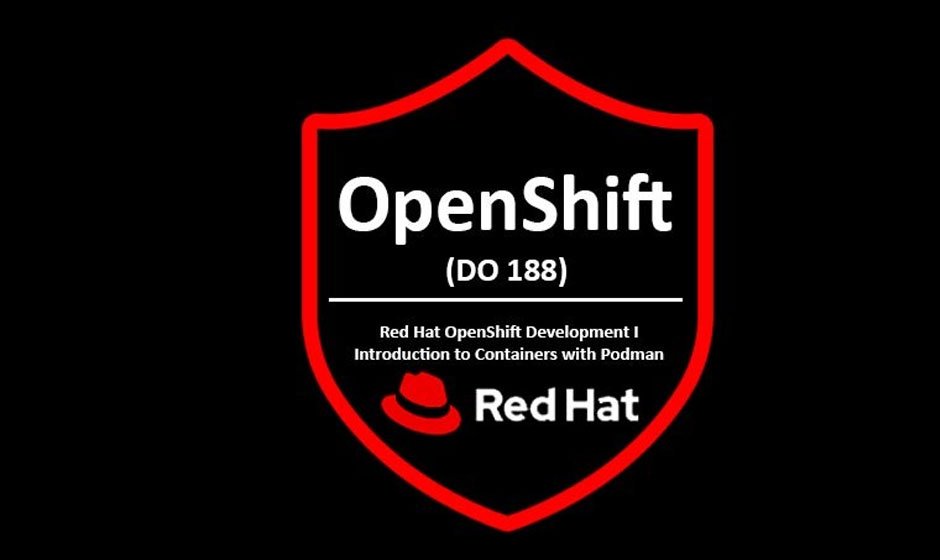What is the Red Hat OpenShift exam code?

Are you interested in becoming a certified OpenShift professional? Red Hat offers various certification programs to help IT professionals gain expertise in the latest technologies. If you are looking for an opportunity to boost your career and demonstrate your skills, then the Red Hat OpenShift exam is definitely worth considering. But what exactly is this exam code all about? In this blog post, we will explore the different types of OpenShift certifications, uncover the secrets behind the ex280 exam dumps, and share some expert tips on how to prepare for it. So let’s get started!
What is OpenShift?
OpenShift is a container application platform that helps developers build, deploy and manage applications. It is designed to simplify the process of deploying and scaling applications, making it an ideal choice for businesses looking to streamline their development workflow.
One of the key features of OpenShift is its use of containers. Containers are lightweight virtual environments that can run on any system with minimal overhead. This makes them incredibly flexible and scalable, allowing developers to rapidly prototype and test new applications.
Another important feature of OpenShift is its support for multiple programming languages. Whether you are working with Java, Python or Ruby, OpenShift has you covered.
In addition to these technical features, OpenShift also offers a range of tools and services designed to help teams collaborate more effectively. From integrated source control management to continuous delivery pipelines, everything you need to build great software is included out-of-the-box.
If you are looking for a powerful container platform that can scale with your business needs, then OpenShift might be just what you need!
The Different Types of OpenShift Certifications
OpenShift is a versatile platform that can be used in various industries and across different types of organizations. As such, there are several OpenShift certification options to cater to individuals with varying levels of expertise.
The first certification option is the Red Hat Certified Specialist in OpenShift Administration (EX280), which validates an individual’s ability to install, configure, and manage OpenShift clusters. This exam tests one’s knowledge of core concepts like containers, Kubernetes API objects, storage management, networking basics and more.
Next up is the Red Hat Certified Specialist in Containers and Kubernetes (EX180), which focuses on containerization technologies using Docker as well as configuring Kubernetes services for production deployment.
For those who want to demonstrate their full mastery of OpenShift skills and technologies at an enterprise level may opt for the highest level certification – Red Hat Certified Architect: DevOps.
Each certification option targets different areas within the vast world of OpenShift technology so it’s essential to choose the right one based on your career path or organizational needs.
The Red Hat OpenShift Exam Code
The Red Hat OpenShift Exam Code refers to the code that represents the certification exam for professionals who want to validate their skills in using Red Hat OpenShift. This exam measures one’s ability to deploy, manage, and operate applications on Kubernetes/OpenShift clusters.
To take this exam, one must first earn either a Red Hat Certified System Administrator (RHCSA) or a Red Hat Certified Engineer (RHCE) certificate. Once you have these prerequisites, you can register for the EX280 certification exam.
The EX280 is a performance-based exam that tests your knowledge of deploying containers and creating containerized services with Kubernetes and OpenShift. It consists of tasks that require you to solve real-world problems using both command-line tools and web interfaces.
Passing this certification will prove your expertise in operating environments running on Red Hat Enterprise Linux (RHEL). So if you want to advance your career as a cloud administrator or developer, taking the RED HAT OpenShift Exam is definitely worth considering!
How to prepare for the Red Hat OpenShift Exam
Preparing for the Red Hat OpenShift exam can be a daunting task, but with the right approach and mindset, you can pass it with flying colors. Firstly, get familiarized with the exam’s objectives by visiting Red Hat’s website or reading their official documentation. It is important to understand what topics will be covered in the exam.
Next, practice using real-world scenarios by setting up your own OpenShift environment at home. This way, you’ll have hands-on experience on how to deploy applications and troubleshoot any issues that may arise during deployment.
It is also recommended to take online courses or attend training sessions provided by Red Hat certified instructors. There are plenty of resources available online that offer study guides and practice exams that mimic actual test conditions.go to IT certification website
Develop a strategy for taking the exam itself. Create a schedule leading up to it so you have enough time to review all of the material thoroughly. On the day of the test, arrive early at your testing center and bring proper identification as well as some form of payment if necessary.
By following these steps, you’ll feel more prepared when taking this challenging certification exam!
What to expect on the exam
The Red Hat OpenShift exam is a performance-based evaluation of your skills and knowledge in managing and deploying containerized applications on the OpenShift platform. The exam consists of practical tasks that you need to complete within three hours, using real-world scenarios.
During the test, you can expect to encounter various challenges related to building and managing applications with Kubernetes, including creating projects, deploying containers, scaling resources, implementing security controls, configuring networking and storage solutions. You will also face troubleshooting issues that require quick thinking and problem-solving abilities.
To succeed in the exam, you should have a strong grasp of core concepts such as pods, services, routes, deployments and persistent volumes. Additionally, you should be familiar with command-line tools like oc CLI for interacting with OpenShift clusters efficiently.
Overall,the Red Hat OpenShift exam is designed to evaluate your ability to perform essential tasks required for working with container orchestration technology effectively. So make sure you practice regularly before taking this challenging certification!
Exam tips and tricks
Preparing for an exam can be a daunting task, especially if you’re not sure what to expect. However, with the right tips and tricks, you can increase your chances of success on the Red Hat OpenShift Exam.
One of the most important things you can do is practice. Take advantage of any practice exams or sample questions available to help build your confidence and familiarize yourself with the exam format.
Another tip is to review all relevant materials thoroughly. This includes reading through documentation, attending training sessions, and gaining hands-on experience working with OpenShift.
It’s also important to manage your time effectively during the exam. Make sure you understand how much time you have for each section so that you don’t spend too long on one question or run out of time before completing all sections.
During the exam itself, read each question carefully and make sure you understand exactly what it’s asking before answering. Don’t rush through questions – take your time and double-check your answers before moving on.
Stay calm! Remember that stress and anxiety can negatively impact performance. Take deep breaths when feeling overwhelmed or anxious in order to regain focus and clarity of mind.
By following these tips and tricks, as well as adequately preparing beforehand, candidates will be better equipped for success on their Red Hat OpenShift Exam.
Conclusion
The Red Hat OpenShift exam code is an essential certification that validates your skills and knowledge in deploying and managing applications on OpenShift platforms. By earning this certification, you prove that you have what it takes to help organizations succeed in today’s fast-paced business world.
To succeed in the Red Hat OpenShift exam, it’s essential to prepare adequately by studying and practicing with relevant resources such as ex280 exam dumps. Additionally, keeping up-to-date with the latest developments in cloud computing technologies is crucial for success.
Remember that passing the Red Hat OpenShift exam requires a deep understanding of application deployment, containerization, automation tools like Ansible and Kubernetes. Therefore constant practice through labs and exercises is critical.
Always remember that certifications are not just about having letters after your name or adding another accolade to your resume; they are about validating real-world skills. So go ahead! Take on the challenge of becoming a certified expert on RedHatOpenShift today!



